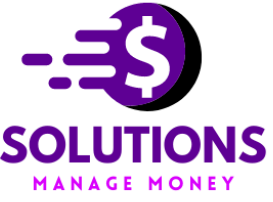Use Quicken for Tax Reports
Stay organized and stress-free during tax season with Quicken
1. Why Use Quicken for Taxes?
Quicken simplifies tax season by organizing your income, expenses, and deductions in real time. It automatically categorizes transactions to align with IRS tax forms, making filing accurate and fast.
2. Set Up Tax-Ready Categories
Use Quicken’s built-in tax categories like “Medical Expenses,” “Charity Donations,” or “Home Office” to properly tag each transaction. These tags make your tax summary precise and audit-ready.
3. Link Bank Accounts
Sync your checking, savings, and credit card accounts for automated transaction tracking. Quicken pulls in data securely, reducing manual entry and errors.
4. Use Tax Reports Feature
Navigate to Reports > Tax to generate summaries like “Tax Schedule A” or “Tax Summary by Category.” Export them as PDF or Excel files for your accountant or tax software.
5. Track Investments & Capital Gains
Quicken Premier and above let you track your investment income, dividends, capital gains, and cost basis — essential for tax filing if you buy/sell stocks or mutual funds.
6. Maximize Deductions
Identify tax-saving opportunities like unreimbursed work expenses, education costs, and mortgage interest through smart reports and category filters.
7. Export Directly to Tax Software
Export your tax reports or use compatible formats with TurboTax and other filing tools. This saves hours of work and ensures figures match exactly.
8. Backup & Security
All your tax data can be securely backed up with Quicken’s cloud sync or local drive backups. Keep your reports accessible and safe during audits or reviews.
What is Quicken and Why Use It for Taxes?
Quicken is a comprehensive personal finance software that helps you manage your budgets, bank accounts, bills, investments, and more. One of its standout features is the ability to generate detailed tax reports, which can save hours during tax preparation.Benefits of Using Quicken for Tax Reporting
- Automatically categorizes transactions according to tax categories.
- Generates summary reports by category that align with tax forms.
- Helps track deductible expenses and income streams.
- Integrates with TurboTax for easy filing.
- Stores historical data for prior years to compare and review.
- Reduces errors by keeping organized records throughout the year.
Step-by-Step Guide to Using Quicken for Tax Reports
1. Set Up Your Quicken Account Correctly
- Link all your financial accounts: bank, credit cards, loans, investments, income sources.
- Categorize transactions using Quicken’s tax-related categories like Business Expenses, Medical Expenses, etc.
- Customize categories or subcategories if needed to fit your tax needs.
2. Track Income and Expenses Throughout the Year
- Regularly download and update transactions.
- Review and categorize every transaction carefully.
- Attach receipts or documents to transactions for proof.
3. Use Quicken’s Tax Reports Feature
- Generate Schedule C (Profit & Loss) Reports for small business or freelance income.
- Use Tax Summary Report to view income, deductions, and tax categories.
- Track investments with Capital Gains Reports.
- Get detailed reports for Charitable Donations and Medical Expenses.
4. Generate a Tax Report in Quicken
- Open Quicken and go to the Reports menu.
- Select Taxes and choose the type of report (e.g., Tax Summary, Schedule C).
- Set the correct date range (usually Jan 1–Dec 31 of tax year).
- Review for accuracy and export as PDF or Excel.
5. Review and Adjust Your Tax Categories Before Filing
- Verify deductible expenses are properly categorized.
- Match income to 1099s or W-2s.
- Update investment gains or losses.
- Ensure charitable contributions have documentation.
- Edit transactions or categories if errors found.
6. Export Quicken Data to TurboTax or Other Tax Software
- Use Quicken’s export feature to transfer data directly to TurboTax.
- Reduces manual entry and minimizes errors.
- Review imported data in your tax software before filing.
7. Save Your Tax Reports for Future Reference
- Keep copies of tax reports digitally or printed for 3 to 7 years.
- Quicken lets you archive and retrieve prior years’ reports easily.
Tips and Best Practices
- Keep Quicken updated for the latest tax features.
- Regularly backup your data to avoid loss.
- Use the Quicken mobile app to track expenses on the go.
- Separate business and personal finances using different files or categories.
- Attach scanned receipts and invoices to transactions.
- Check for software updates before tax season.
- Set reminders for bill payments and tax deadlines inside Quicken.
Common Issues and Fixes
- Incorrect transaction categorization: Review transactions monthly.
- Missing transactions: Ensure all accounts are properly linked and synced.
- Export errors: Use compatible Quicken and TurboTax versions.
- Incorrect totals: Double-check for duplicate or missing transactions.
Using Quicken for Tax Reports: The Role of Third Party and Independent Services
Using Quicken for tax reports helps many individuals and small businesses organize their finances effectively. Quicken’s powerful features allow users to track income, expenses, and generate detailed tax reports with ease.
However, for more complex tax needs, some prefer to seek help from third party or independent tax professionals.
While Quicken can export data directly to popular tax filing software, an independent tax advisor or a third party accountant can provide expert guidance tailored to your specific financial situation. These professionals review your Quicken reports to ensure accuracy, identify additional deductions, and help avoid costly mistakes.
